In the Edo period, fire was not something easily obtained. Without matches or gas lighters, households needed to preserve and manage fire with care. Once a flame was sparked—often with flint and steel—it was essential to keep it alive and transport it safely to light lamps, stoves, or hibachi.
The tool used to carry this precious ember was the “Hi-morai” (火もらい). In this article, we explore the cultural and historical significance of this fire holder, especially those made of Mino ware ceramics, and how it reflects the daily life and ingenuity of the people of that era.
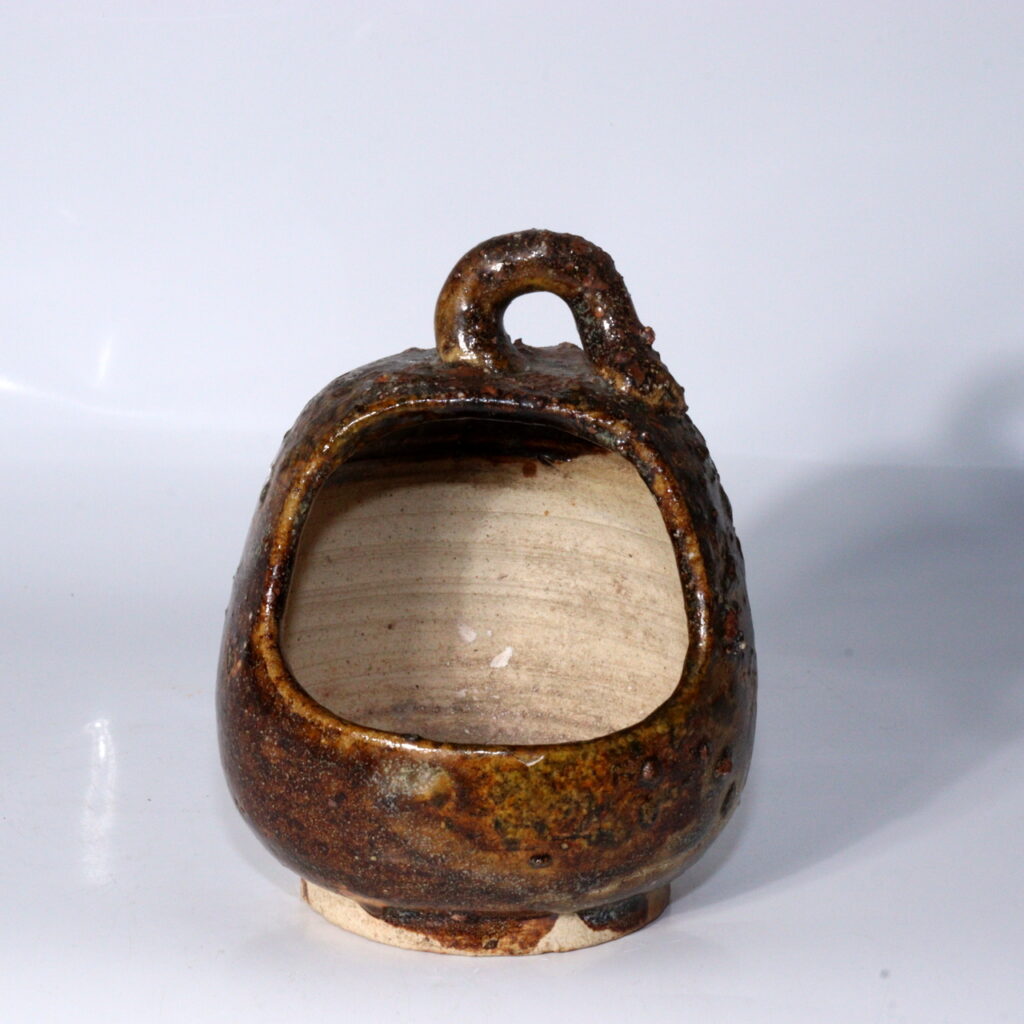

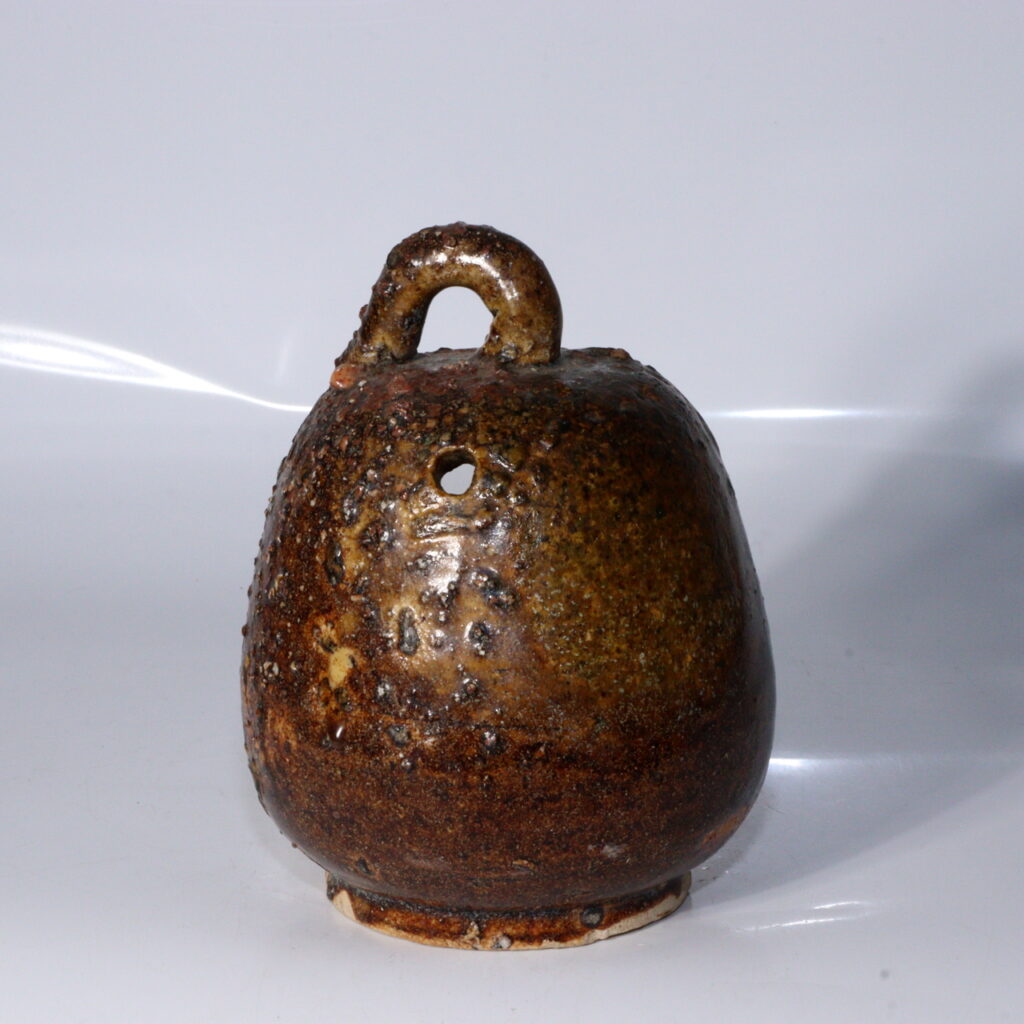
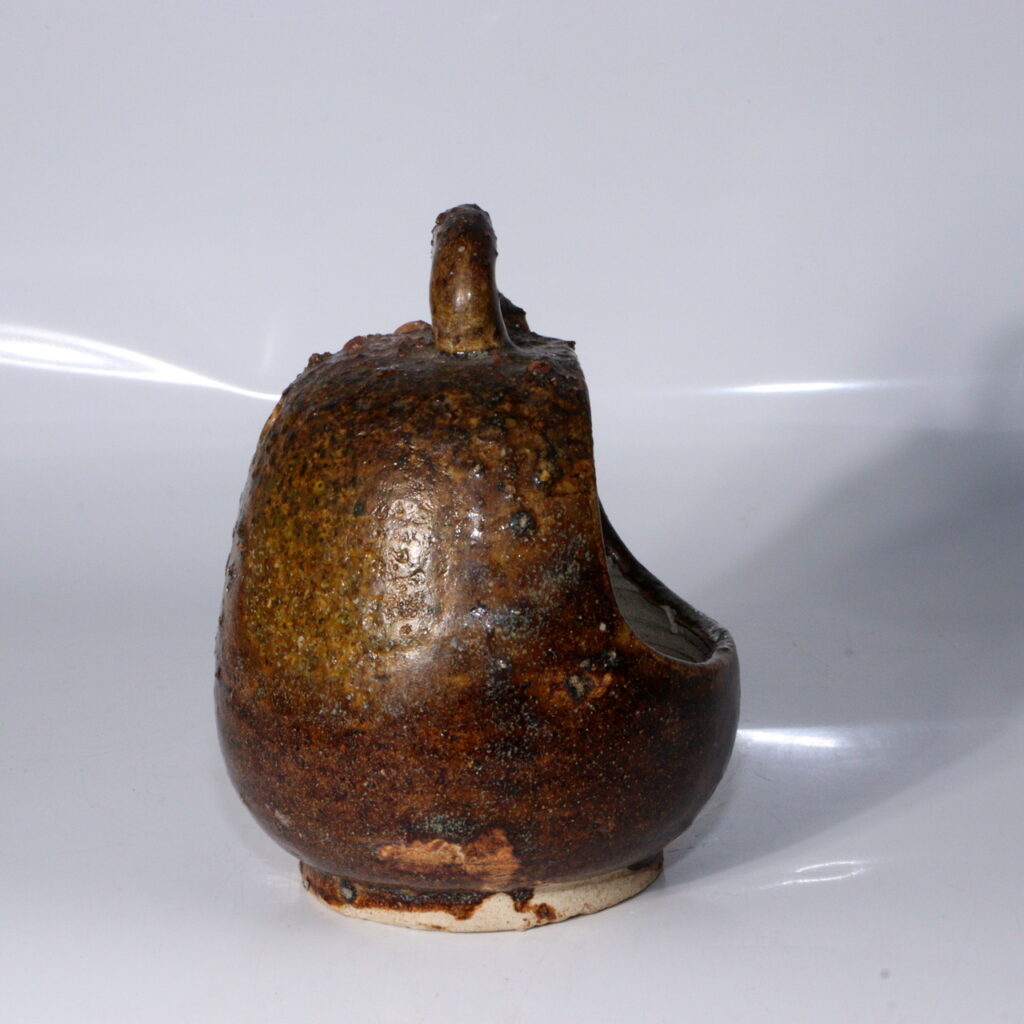
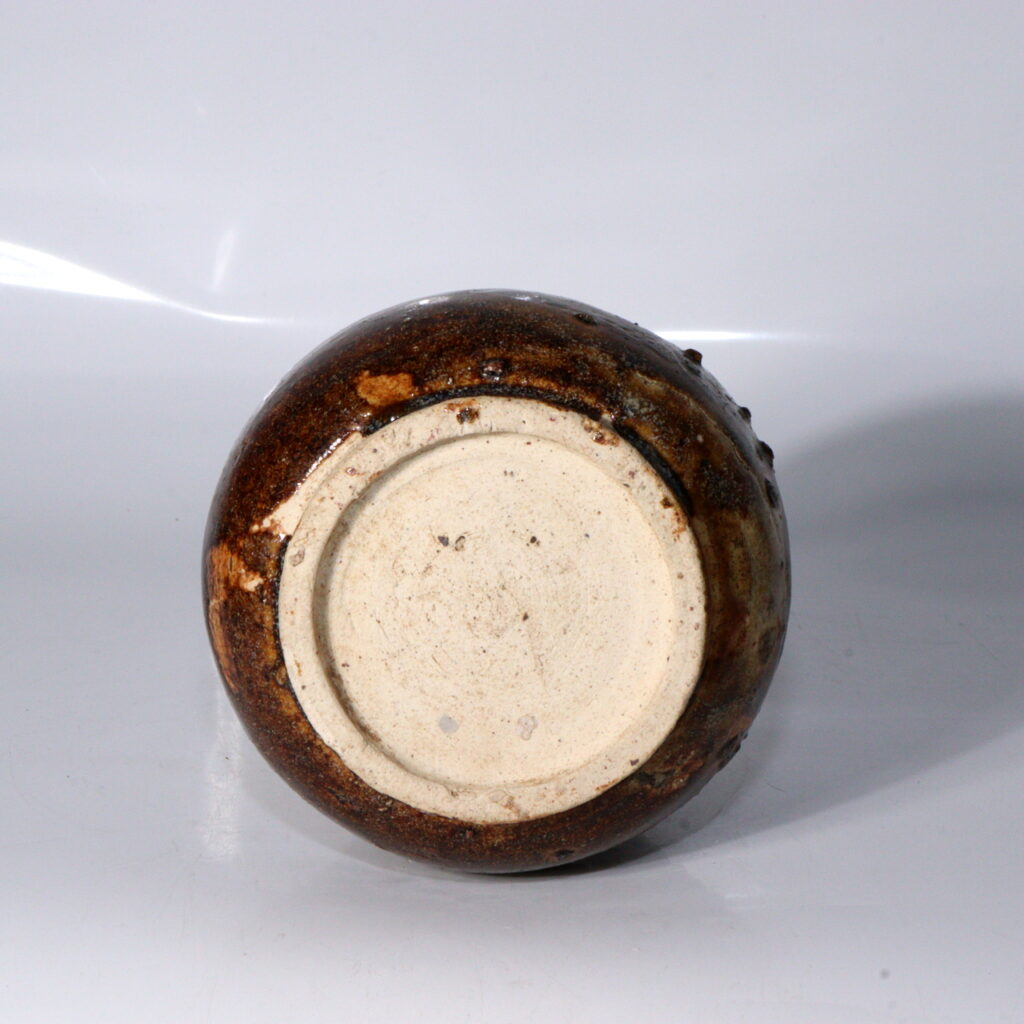

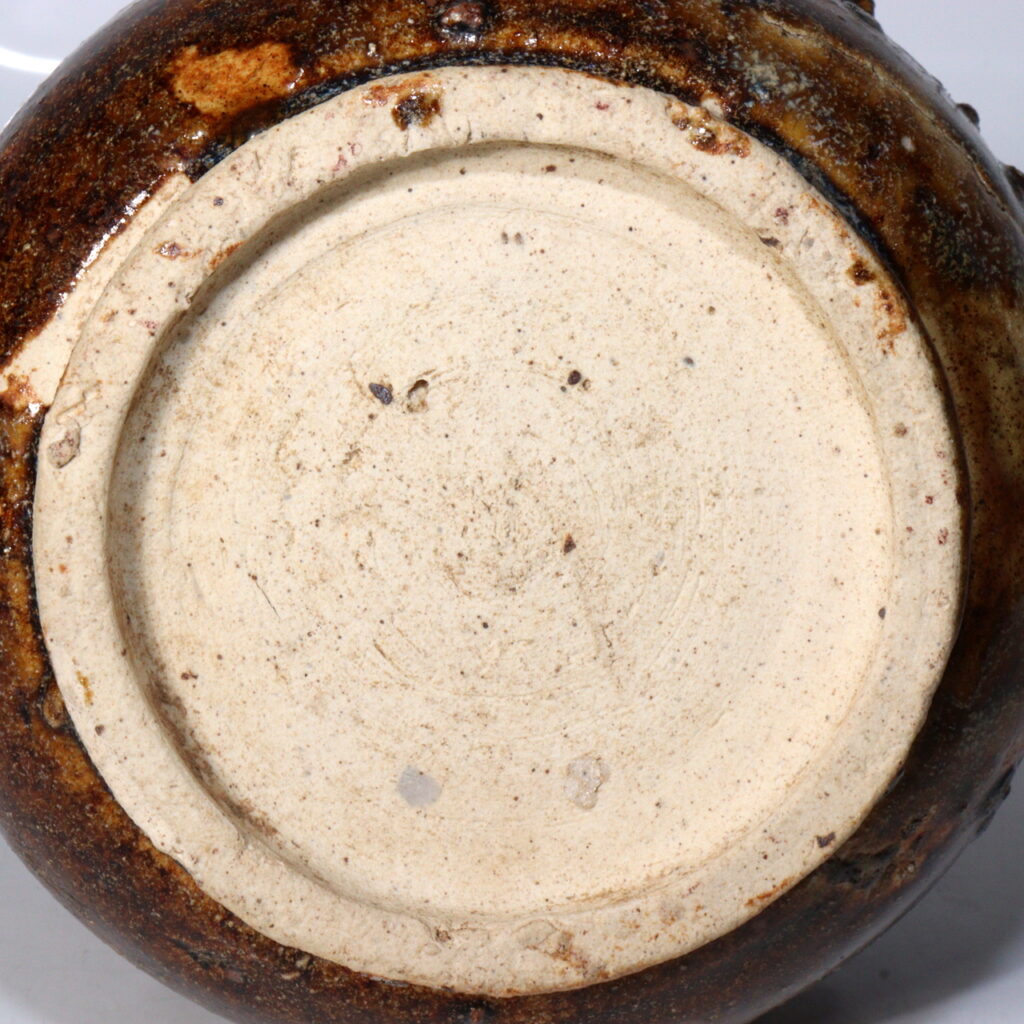
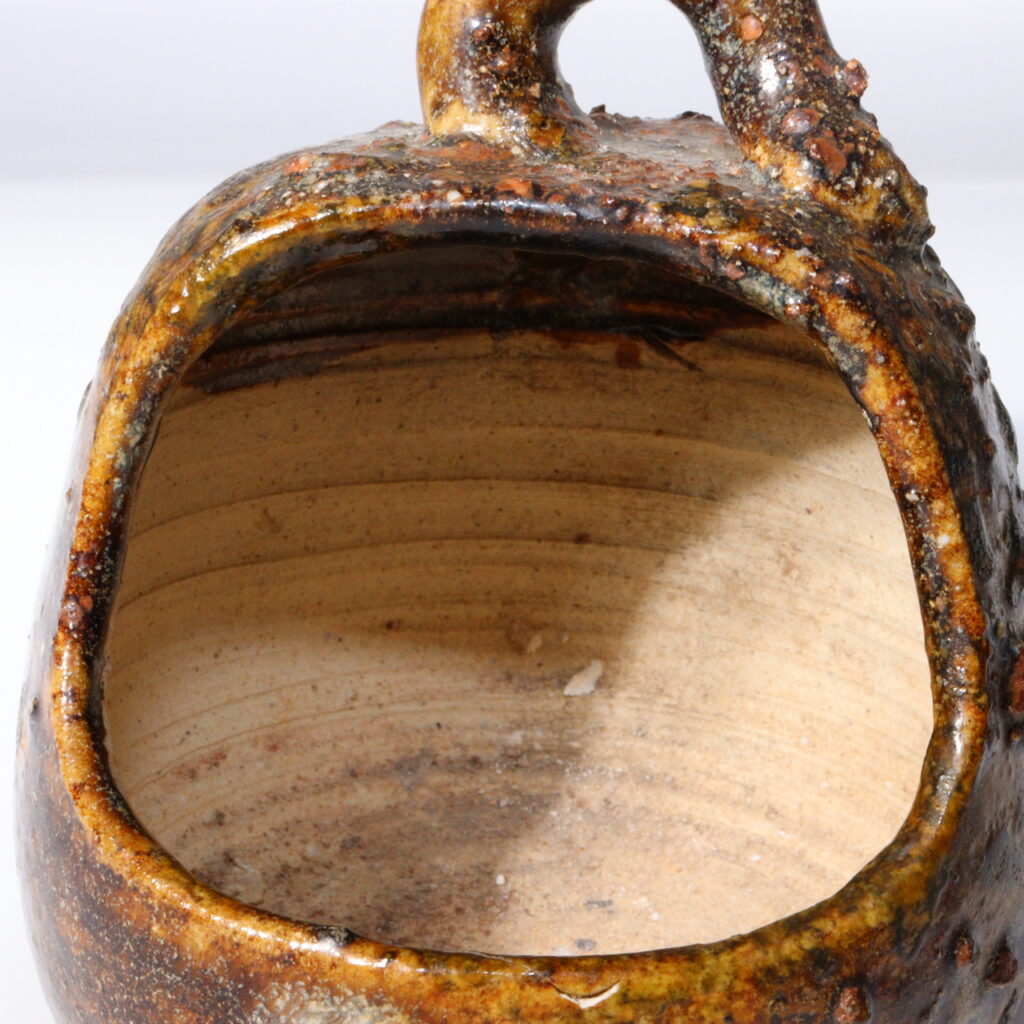
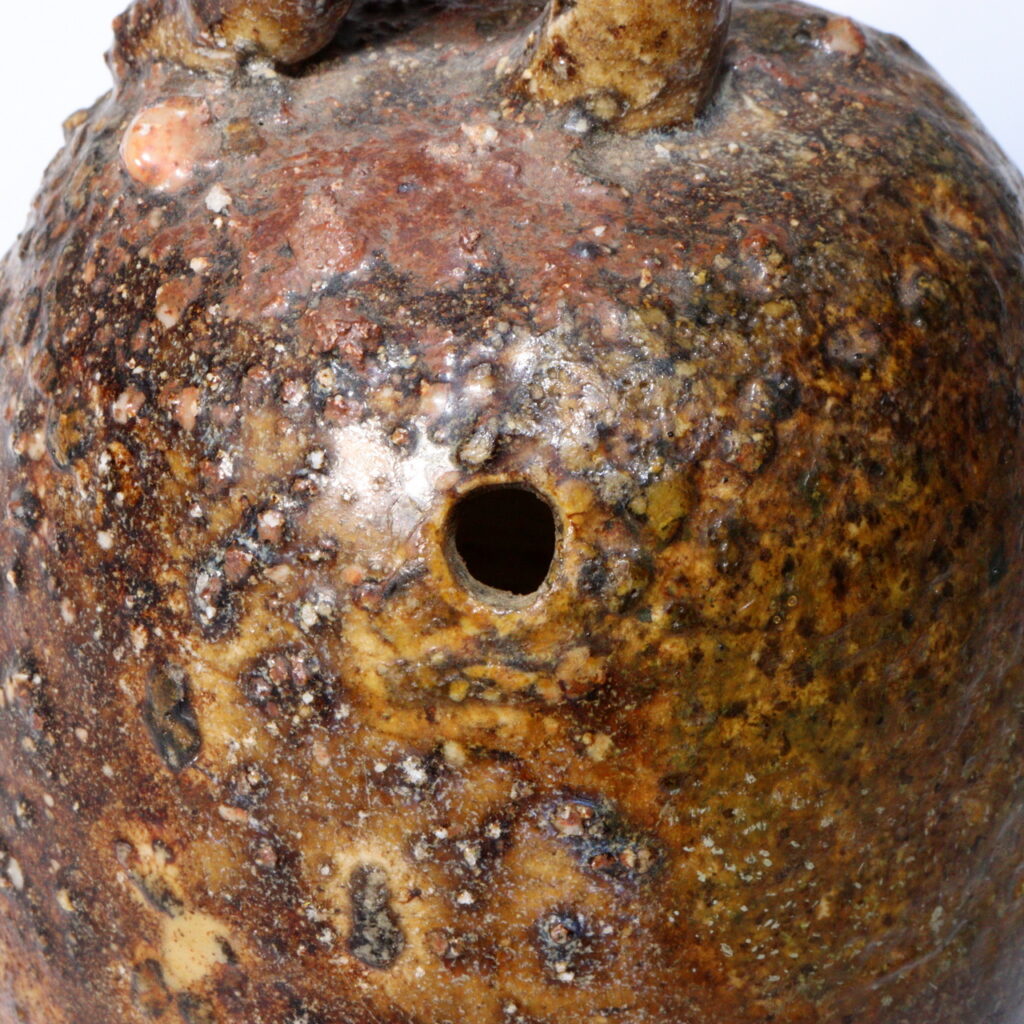
Historical Background of the Hi-morai
The Hi-morai was a vital object used to carry burning embers or charcoals from one source to another within the home. Rather than rekindling a flame each time, which required effort and skill, families used this vessel to transfer fire from a central hearth or neighboring home.
Ceramic Hi-morai vessels became especially popular among common households during the mid-Edo period. In the Mino region (modern-day Gifu), where pottery production flourished, these items were crafted in various shapes and glazes suited for practical use. They were not just tools, but expressions of a communal lifestyle centered around the sharing of fire.
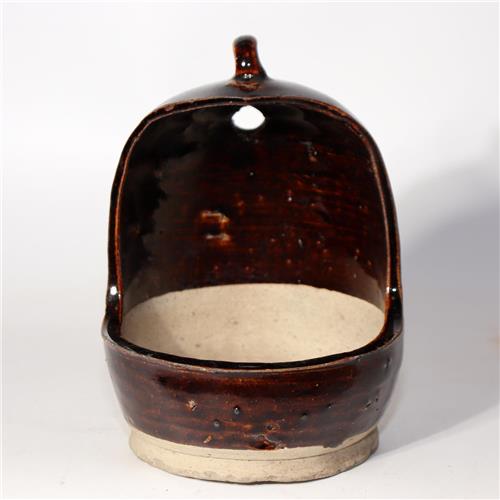
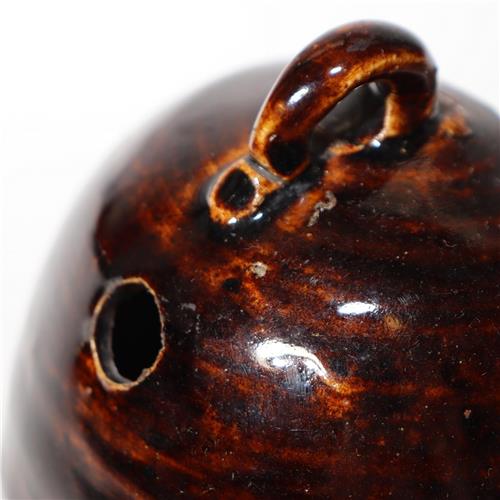


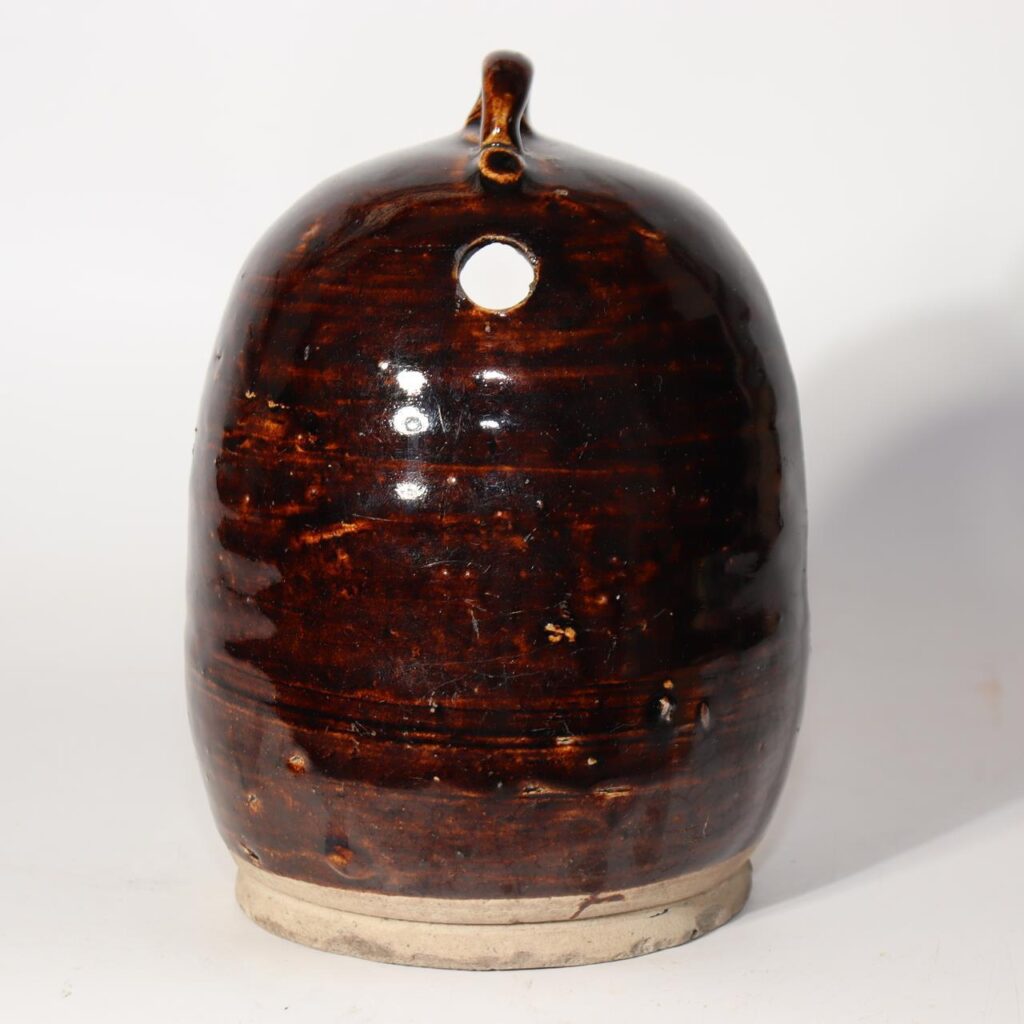
Characteristics and Typology
The featured piece is a classic example of a Mino ware fire holder with a looped handle on top for hanging or carrying. The hole near the upper section allows for ventilation, helping embers to stay lit while preventing excessive smoke.
Its wide, open front makes it easy to insert and remove charcoal, while the thick ceramic walls provide insulation and protection. The glaze—either iron glaze or natural ash glaze—adds depth and variation to the surface, with a rustic, earthy appearance that enhances over time.
✨ Value and Reappraisal in the Modern Era
Although obsolete as a functional tool, the Hi-morai has regained popularity among collectors of Japanese antiques. Its sculptural quality and utilitarian history make it a compelling decorative piece.
Particularly Mino ware examples, with their unrefined yet warm presence, are now used as small flower vessels or wabi-sabi interior accents. They are appreciated not only for their form but for the spirit of preservation and tradition they represent.
🔍 Personal Experience and Provenance
I’ve acquired this type of Hi-morai twice, both from antique dealers in the Mino region. Each came from old rural homes, passed down through generations. Despite their age, they remain in excellent condition, especially in terms of the glaze texture, which conveys the beauty of Edo-period folk craftsmanship.
🪔 Conclusion: Preserving Fire, Preserving Culture
The Hi-morai embodies a forgotten yet profound aspect of Japanese daily life—the management of fire as both a necessity and a communal act. It is more than a vessel; it is a symbol of care, continuity, and resourcefulness. As a collectible, it offers aesthetic richness and cultural depth, resonating with those who appreciate the quiet power of traditional tools.
👉 View more curated Mino ware items here:
https://koedo-sun-art.com
📈 Suggested SEO Keywords
- Mino ware fire holder
- Japanese antique fire pot
- Edo period folk tools
- Hi-morai ceramic vessel
- Wabi-sabi interior decor
- Japanese folk craft ceramics
- Antique Japanese lighting tools